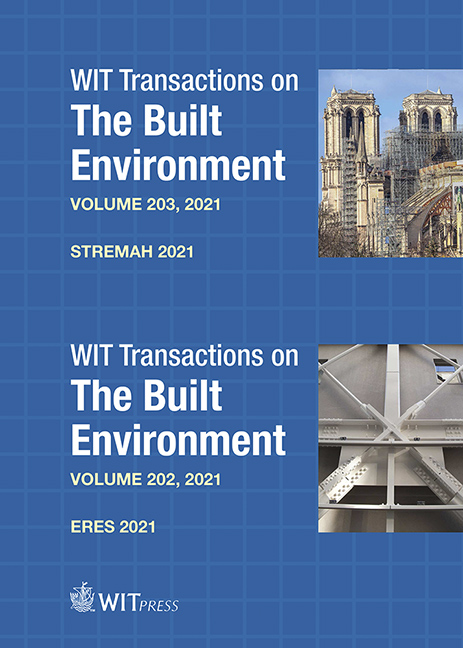WOODWORKING TRADE AT THE TURN OF THE 19TH AND 20TH CENTURIES AND ITS PROTECTION
Price
Free (open access)
Transaction
Volume
203
Pages
9
Page Range
77 - 85
Published
2021
Size
2,868 kb
Paper DOI
10.2495/STR210071
Copyright
Author(s)
KLARA KROFTOVA, LUKAS HEJNY
Abstract
Part of modern monument care is not only the protection of the buildings themselves, but also their components and details created by specific craftsmanship. We can see the importance and influence of traditional crafts both on historical monuments themselves and in the collections of museum institutions. Knowledge and application of these traditional ways of processing building details will make it possible to achieve quality restoration results and also to preserve traditional crafts and sets of their individual skills and habits, usually passed down from generation to generation. The craft tradition is not only hidden in the manual way of processing, but also in the overall approach to the craft and its products. Among traditional historical crafts, woodworking trade occupies an important position, whose products – fillings of openings, shutters, wall and wainscoting, floors and others – are closely connected with the construction of the house and significantly affect both its overall architectural expression and its useful properties, e.g. the well-being of the indoor environment. The works of woodworking trade belong to the building components that wore out quickly and were subject to functional and stylistic change. These factors are the main reason why the number of authentic preserved elements is rapidly declining. In many cases, it is precisely these components of buildings that are being replaced by available industrially produced modern elements, which, however, damage the expression and monumental value of historic buildings. When restoring historic buildings, emphasis should be placed on preserving the historic original and restoring it by traditional historical methods so as to preserve the genius loci of the historic building (and the whole environment) and the craft tradition.
Keywords
woodworking trade, 19th century, cultural heritage, protection




